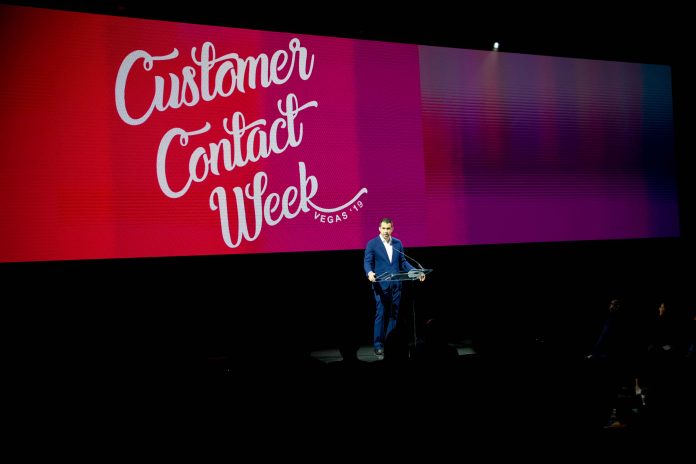Customer Contact Week—a conference focused on customer experience and customer care technology and trends—recently celebrated its 20th anniversary in Las Vegas. So, how has the customer experience evolved in the past two decades? While there have been some significant technological advances, attendees agreed that far more work remains to better serve customers. Business leaders and industry experts shared insights and identified opportunities to evolve even further.
Overcome CX transformation roadblocks
Back in 1999, smartphones didn’t exist. The Net Promoter Score had yet to be developed (it was introduced in 2003). And Customer Contact Week was known as Call Center Week. A lot has changed since companies were “just beginning to talk about something called digital technology” said Mario Matulich, executive director of Customer Management Practice, in a kick-off address. At the same time, some things remain the same. Companies, Matulich noted, still debate which metrics matter and strive to deliver value to the customer. The main challenge is staying ahead of customer expectations at a time when customers are more distracted, connected, and informed than ever before.
Transforming the customer experience to meet or exceed customer expectations is top of mind for many business leaders. The problem is, aside from making relatively simple changes, “people find it very difficult to implement change effectively,” said Megan Burns, founder and principal of Experience Enterprises. An aversion to change often results in companies inadvertently creating roadblocks that prevent successful transformations. Burns shared three ways to overcome CX transformation roadblocks:
1. Be specific – Shifting to more precise language can do wonders in uncovering true priorities and pathways. For example, when you’re told that a CX project is too expensive or has to be put on hold, “because of Wall Street, remember that there are two types of shareholders,” Burns said. “Investors who are in it for the long term and speculators who are looking for quick profits—so push back and ask, which type of shareholder are we most concerned with?” Knowing the answer can help CX leaders align projects better and increase their chances of being green-lit.
2. Help people see the invisible – Similar to the first point, examining something from a new angle or breaking a project down into smaller pieces could make it easier to visualize a way forward. Thinking of a customer journey map, for instance, as “a customer journey blueprint gives the connotation of planning before making a decision,” Burns said, and reduces the pressure to create the perfect map.
3. Leverage existing routines – It’s much harder to make room for a new task than to add to an existing routine. Another way to think of it is “jumping double-dutch,” Burns said. “Just as you have to get the timing right in double-dutch, look for initiatives that already have momentum and figure out how to join them.” Waiting for a budget meeting, for instance, to get approval for a project makes more sense than trying to introduce the project outside of that timeframe.
The future of AI is a human partnership
“We’ve experienced the age of the customer and now the age of the employee is upon us,” Matulich said. The understanding that great customer experiences are impossible without great employee experiences was a major theme at the conference. And as Lance Gruner, EVP of global customer care at Mastercard, pointed out, the age of the employee is concurrent with the age of AI. “Questions about retention and creating a good work environment still exist but people evolve,” Gruner told 1to1 Media. “And companies have to adapt, which is why understanding how to use AI and CX tools effectively is so important [to improving the employee experience].” More specifically, while AI is helpful for training customer care associates faster and taking on routine parts of customer interactions, technology is only a supplement to the human experience. “Tools and technology are essential, but they can’t replace the human element.”
Nick Cerise, CMO at TTEC (1to1 Media’s parent company) agreed. “AI serves a multitude of purposes, but the technology is even more effective when it’s paired with humans,” he explained. High-performing employees, for instance, are well suited for training an AI system to provide customer and education support, creating a “virtuous cycle where you’re using your best employees to train an AI that in turn trains more employees, which increases speed to proficiency and delivers an even better customer experience.”
Consistency beats novel CX
Customer loyalty is more elusive than ever, noted Shep Hyken, a customer experience and service expert. Part of the reason is not only are companies competing with other firms in the same industry, but “people also compare your service to the best service they’ve ever received from any sector,” Hyken said. However, trying to constantly one-up competitors with newer and better services and products is a fool’s game. “The best companies who are constantly seen as amazing are a little bit better than average all the time,” Hyken explained. Consistently good, personalized service is much more effective (and cost effective) than over-the-top experiences that may go unnoticed. How do companies know when they’re doing it right? Companies are on the right path when “the word always is followed by something positive [when customers speak of a brand],” Hyken said. “That’s when you know you’re in the zone of amazement.”
What’s next
Attitudes about the customer, employees, and technology’s role have significantly changed since 1999. At the same time, the pace of change has rapidly accelerated. As Gruner put it, “in the next five years we will see more changes in CX tools and AI than we have in the last 20 years.” If the past 20 years was about adapting to changes, the next 20 years will be about predicting change and preparing for it without your customers ever noticing.
Contact Center Leaders: Look Back to Look Forward
Author
Date

